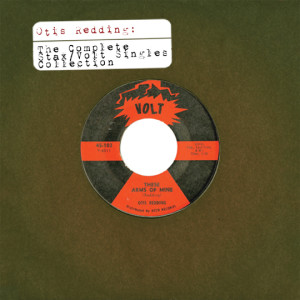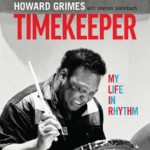 To discuss how an artist could be perfect at releasing singles, one must first examine what goes into making a classic single. First, no matter the format, a single is limited to usually two songs, so this constraint forces the artist to really narrow down their material to what they truly feel is their best. This cream of the crop typically contains a combination of maximum-accessibility, catchy rhythms, memorable lyrics, tons of hooks and nothing but great performances by every participating musician. Alongside this recipe, the decision for a single is commonly made to represent the essence of the artist and their current sound. Otis Redding successfully did all of the above and then some.
To discuss how an artist could be perfect at releasing singles, one must first examine what goes into making a classic single. First, no matter the format, a single is limited to usually two songs, so this constraint forces the artist to really narrow down their material to what they truly feel is their best. This cream of the crop typically contains a combination of maximum-accessibility, catchy rhythms, memorable lyrics, tons of hooks and nothing but great performances by every participating musician. Alongside this recipe, the decision for a single is commonly made to represent the essence of the artist and their current sound. Otis Redding successfully did all of the above and then some.
Also during the 1960s, The Beatles and other like-minded groups moved beyond the single and instead focused on utilizing the album as a platform for their art. While this advent allowed artists to stretch out creatively and to put out many different ideas and moods all at once, Redding showed that this was not a necessary change. With even a casual observance to “I’ve Been Loving You Too Long” or “I Can’t Turn You Loose,” one can notice how Redding packed an album’s worth of emotion, power and energy into each 45.
Even on his very first single, 1962’s “These Arms of Mine/Hey, Hey Baby,” Redding grabs hold of the listener and enjoyably pulls them from one intricate emotion to the next. A band’s entire debut LP can rarely achieve this sort of feat, yet Redding and his band do it within five minutes.
One might find it surprising that Redding released a decent amount of slow songs as A-sides. This is not to say that slow songs can’t be great seven-inches, but many artists and companies tend to favor tracks with a faster tempo for their singles. Yet these slow tunes deserve their A-side placing, as they swell with warm sincerity, beautiful melodies, and Redding’s always gracefully soaring vocals. While the slower singles on this set are anything but dull or unpleasant, the up-tempo tracks are really Redding in his prime.
Every up-tempo side in this collection packs an unadulterated punch. Redding’s good-natured voice shreds, croons and swings with a burning vigor through each of these songs while his bands add perfectly complimentary instrumentation. All of these tracks are effortlessly danceable and can be highly addictive. Take for instance, Redding’s cover of The Rolling Stone’s “Satisfaction.” The King of Soul completely transforms the song into a funky, brass driven bop that sounds almost like a prototype for Sly and The Family Stone.
Getting to hear all 70 of his Stax and Volt sides in chronological order on this set reveals that Redding consistently made nothing but exquisite gems through his entire career. Even the singles that were released posthumously are moments of sheer gold. Other prolific artists at least have a few low points in their discographies, like the occasional foray into an unusual style or an attempt to catch up with the passing times, yet as this set shows, Redding did no wrong as a singles artist. Even his Christmas single, “White Christmas/Merry Christmas Baby,” is not only phenomenal, but can easily be listened to anytime of the year (whereas most artists’ weakest moments are when they attempt holiday music). For fans of R&B, soul or finely crafted pop songs, The Complete Stax/Volt Singles Collection is essential.
– Keith Hadad







[…] small but mighty. Since the 1960s, a handful of studios have turned out hits from Aretha Franklin, Otis Redding, Lynyrd Skynyrd and many more, creating a sound that blends country, rock, gospel, blues and soul […]
[…] New York/European busker background. While some have compared Hooks to Little Milton or even Otis Redding, this disc often finds Hooks in a soul-driven, hard-rock mode. He has a rough-edged quality to his […]
[…] sound had dissipated entirely, substituting in its place a funk and soul, much of it influenced by Otis Redding, James Brown, the JBs and the radio-ready urban rumblings of the […]